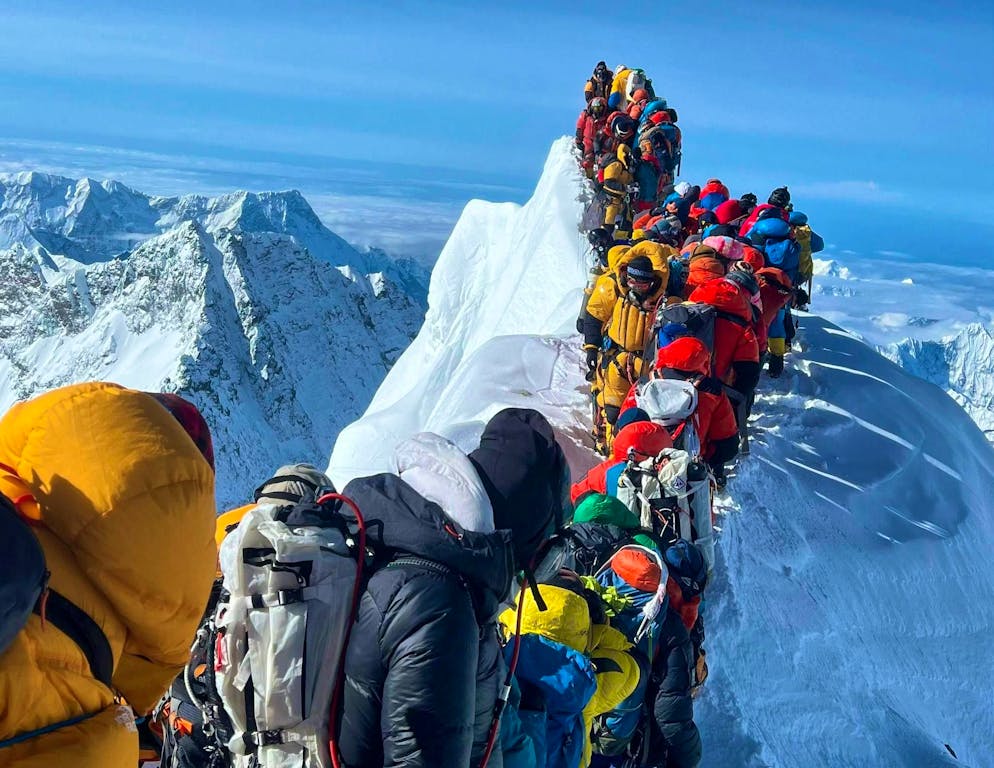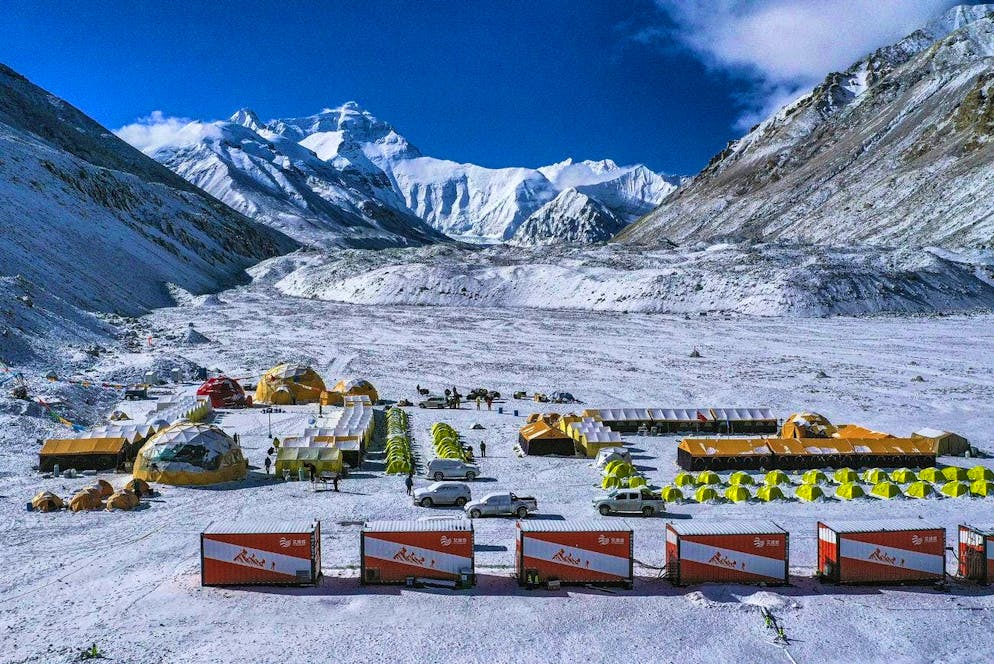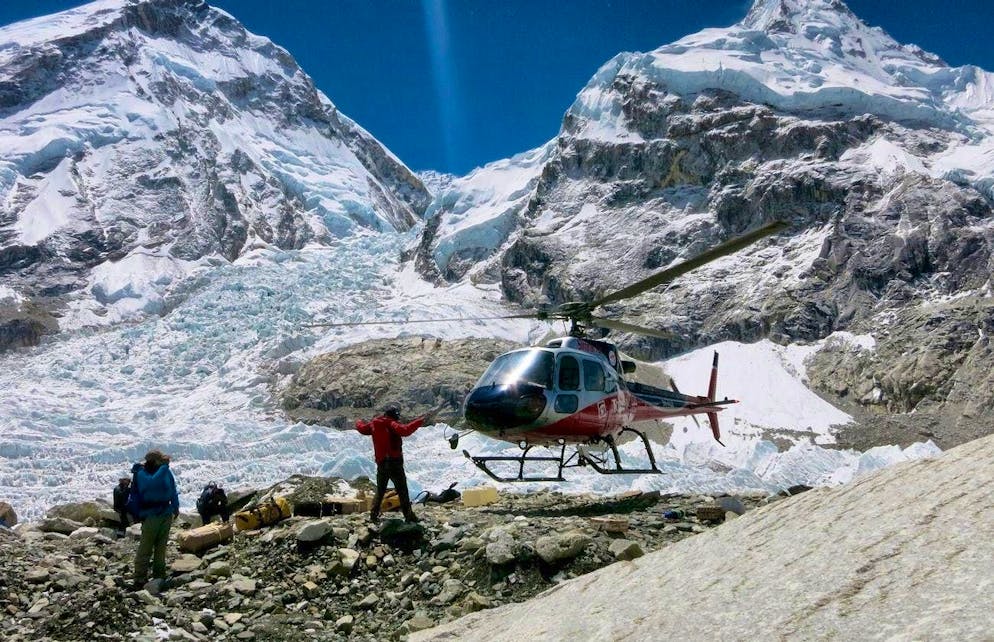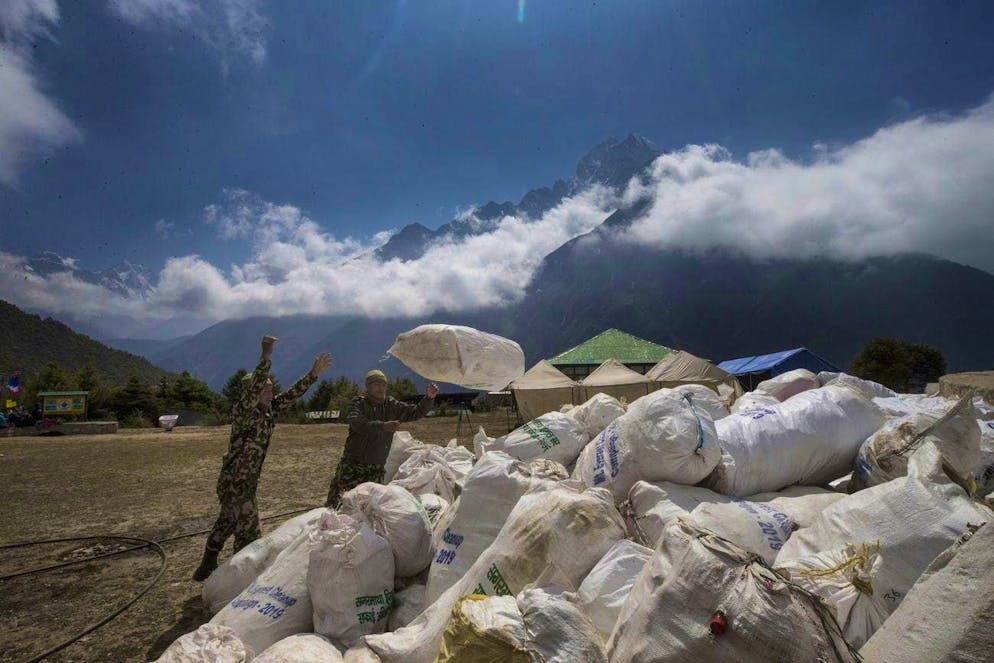Madness on Mount Everest What was once unique is now luxury tourism and moneymaking
Samuel Walder
1.10.2024

Mount Everest is bringing in money for Nepal through tourism - and more and more of it. The country wants to make the route to the summit even more attractive for tourists. This is upsetting for many.
No time? blue News summarizes for you
- Everest tourism has evolved from a dangerous expedition to a commercial challenge.
- Nepal is taking over the tourism market on Mount Everest and squeezing out foreign agencies.
- Thanks to the internet and falling costs for material transportation, Nepalese companies can offer lower prices.
- Critics such as alpinist Dani Arnold lament the loss of mountaineering culture and see the increasing commercialization of Mount Everest as problematic.
Just 20 years ago, mountaineers who climbed the highest mountain in the world were considered pioneers. Today it could hardly be any different. Nepal mainly benefits from tourists, who now see the ascent to Mount Everest as a challenge rather than a dangerous expedition.
SRF Dok writes: 2000 people at base camp, 421 permits, 41 expeditions, 758 people on the summit, including 471 Sherpas, fewer and fewer professional climbers, more and more beginners, prices ranging from 45,000 dollars to 450,000 dollars (around 38,000 to 380,000 Swiss francs) for an ascent: The business on the world's highest mountain has taken on gigantic proportions.
Competition for Everest
Nepal has recognized the financial potential of the rush to the highest mountain and is exploiting it. This is because fierce competition is raging on the world's highest mountain.
Nepalese providers dominate the market for expeditions to Mount Everest and have displaced foreign agencies. The latter are now trying hard to assert themselves. The Nepalese government is planning to increase the price of the Everest permit next year from 11,000 dollars to 15,000 dollars (approx. 9300 to 12,700 Swiss francs) in order to regulate the growing rush.
For Kari Kobler, the former owner of the Swiss expedition agency "Kobler und Partner", the change on Everest is difficult to cope with. When he arrives at base camp in the spring of 2024, he is shocked: "It's just disgusting," says the 69-year-old, who was last on Everest as an expedition leader in 2008. In his day, everything was "small and nice", the expedition leaders knew each other and no group had more than twelve members. Today, there are around 2000 people at the base camp, whereas back then there were only 1000.
Sherpas take over the sceptre
The days when western agencies from New Zealand and Australia dominated the market are over. Around 80 percent of the agencies offering Everest expeditions now come from Nepal. One of the leading companies is "Seven Summit Treks", which was founded by the brothers Tashi, Dawa and Mingma Sherpa. Kari Kobler used to be their employer, but the Sherpas have developed the business further and now offer a service that is attractive to both experienced mountaineers and extremely wealthy clients.

An Everest climb costs between 45,000 dollars in the normal segment and up to 450,000 dollars in the luxury segment at "Seven Summit Treks". VIP guests receive their own tent with bed and electric blanket, Wi-Fi, several personal Sherpas and even a helicopter service that allows them to conduct their business in Kathmandu in between. For Tashi Sherpa, this is progress: "In the past, only mountaineers came, but now we also have very wealthy customers from the upper segments."
The influence of the internet
The internet has revolutionized the expedition business, explains Dawa Steven Sherpa from "Asian Trekking", one of Nepal's oldest agencies. "Customers used to go to agencies in their home countries. Today, they can check our offer with one click and book directly with us." The elimination of middlemen allows Nepalese providers to offer more competitive prices. The lower cost of transporting materials to base camp also contributes to the fact that the profit margins of Nepalese providers are significantly higher than those of Western agencies.
But while prices have fallen, the motivation of Everest aspirants has changed. "In the past, they were mountaineers who had a dream, today they are mostly trophy hunters," says Kari Kobler. Many participants are more interested in sharing their adventures on social media than actually experiencing the mountain.
Helicopters instead of mountaineering
Helicopters are now an integral part of the business on Everest. During the mountaineering season in spring, the planes take off and land at base camp every minute. Mountaineers who want to rest after the acclimatization phase can be flown to lower regions or even as far as Kathmandu before tackling the summit. Trekkers who want to avoid the arduous return journey from Everest base camp are also increasingly booking helicopter flights.

Maurizio Folini, a Swiss pilot who works for Nepalese helicopter companies during the Everest season, confirms: "Everest has become a luxury mountain." Nepalese pilot Siddhartha Gurung, CEO of Simrik Air, adds: "Today, many trekking agencies sell 'one-way trekking': walk up and fly down." The cost of such a flight is between 5000 and 7000 dollars (around 4200 to 6000 Swiss francs).
Swiss mountaineer sees a decline in mountaineering culture
Swiss mountaineer Dani Arnold (40) was awarded the Oscar of the mountaineering scene in August. He received the Paul Preuss Prize, which had previously only been awarded to twelve other mountaineers. Among them was one of the most famous mountaineers, Reinhold Messner.
Arnold sees the change in mountaineering culture on Mount Everest as problematic. "It's not what it used to be. Ultimately, it's about the success rate of the individual agencies that want to get you up the mountain," says Arnold. But that shouldn't be the reason to climb a mountain. He says: "It's about the adventure. Even if you climb Mount Pilatus, you can make mistakes or be surprised by the weather. Then you have to abort." So it's all the more of a success if you make it on the second, third or fourth attempt.

It is no longer an adventure
Arnold makes a distinction: "They are no longer mountaineers, but tourists. You need a certain basic level of fitness to complete a mountain tour like this. But you also need that for 6000m peaks." He continues: "But just imagine that there are people who have never walked with crampons and still manage to get to the top, that says it all."
Arnold believes that the way to the top should not be made too easy for people who are not competent. Because: "If you've been to Everest, you have the feeling that you're the great mountaineer. That's just a myth. Now it's just a question of money."
Nevertheless, Arnold understands Nepal's actions. "I understand Nepal as a country and that they are making a business out of it. It's completely logical." For him, however, it is "disturbing" that the once so adventurous environment on the world's highest mountain is being so commercialized.
The environment suffers on Mount Everest
Tourism on Mount Everest also poses another problem. Even in the early 2000s, the Nepalese authorities were busy collecting waste.
In 2022, the media headline "Mount Everest: the world's highest garbage dump". This is because climate change is causing mountains of garbage to appear on the tour to the summit. Oxygen bottles, old tents, sleeping bags and faeces, often left behind by Western tourists and mountaineers, are increasingly polluting the mountain.

Nepal and China have been trying to counteract the situation for years, but with moderate success. The first Eco-Everest expedition was launched back in 2008 to clear up the garbage. Supported by the Nepalese government and international organizations, more than 13,500 kilograms of waste, 450 kilograms of human excrement and the remains of five dead mountaineers had been recovered by 2012.
Tourists are also increasingly being held responsible. In 2018, China reported that more than eight tons of waste had already been removed from Everest, including over two tons of human excrement. In Tibet, mountaineers have had to collect at least eight kilograms of garbage on their way to the summit since 2015. Returners are fined 100 dollars for every kilogram not collected.


